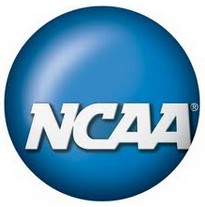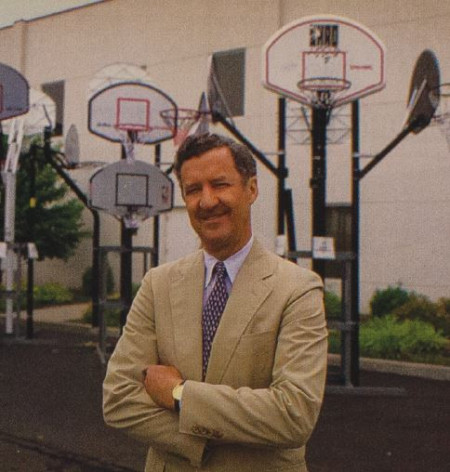2 VISIBLE CLOCKS IN DI GAMES WOULD BE USED BY 2019; DII AND DIII WILL BE REQUIRED TO HAVE CLOCKS BY 2020
INDIANAPOLIS, INDIANA (July 20, 2018) – The NCAA Baseball Rules Committee proposed adding two visible 20-second play clocks for all Division I baseball games, starting with the 2019 season.
Division II and Division III would be required to have two play clocks by the 2020 season.
All rules changes must be approved by the NCAA Playing Rules Oversight Panel, which is scheduled to review potential baseball rules changes Aug. 15.
Under the proposal, the 20-second play clock would start once the pitcher steps on the dirt portion of the mound with the baseball. If the pitcher does not deliver a pitch, make a pick-off throw to a base or step off the pitcher’s rubber before the clock expires, a ball will be assessed to the count. If the batter is not ready to hit by the time the clock expires, a strike will be added to the count.
One clock would be placed in the home plate area, and the other would be located in or behind the outfield wall.
“Pace of play is a hot topic item in college baseball,” said rules committee chair Jim Carone, who is the baseball coach at Wagner. “The committee felt, to improve the game, we need to mandate that we play the game at a faster pace.”
Committee members also debated whether there should be more time placed on the clock when runners were on base but decided to reset the clock at 20 seconds after each pitch.
“We believe it is the most consistent way to do this,” Carone said. “We didn’t want to go the route of having different amounts of time whether or not someone was on base.”
The committee also proposed having a two-minute time limit after each half-inning. The clock would start after the third out is recorded. The current rule calls for play to begin 90 seconds after the last fielder crosses into foul territory.
Coach’s video review challenges
The committee recommended allowing coaches to have two video review challenges per game where the technology is available, starting with the 2019 season.
The following plays will be reviewable by the crew chief at his discretion or with the use of a coach’s challenge:
- Deciding if a batted ball is fair or foul. The ball must first touch the ground or a fielder beyond the initial position of the first or third baseman.
- Deciding if a batted ball is either a ground-rule double or a home run.
- Any catch or no-catch ruling in the outfield or foul territory.
- A no-catch ruling in the infield in some instances. With runners on base, a no catch within the infield can be changed to a catch only if it results in a third out. With no runners on base, a no catch within the infield can be changed to a catch at any time.
- Spectator interference.
- Deciding scoring plays at home plate inclusive of collisions (illegal and/or malicious slides) or time plays.
The following plays will be reviewable only by a coach’s challenge or at the crew chief’s discretion beginning in the last two innings of regulation and extra innings:
- Force and tag-play calls at any base.
- Calls involving whether a base runner passes a preceding runner; determining whether a base runner scored ahead of a third out; and upon an appropriate appeal by the defensive team, determining whether a base runner touched a base.
- Plays involving hit by pitch.
- Deciding if a runner failed to retouch a base after a fair or foul ball is legally caught.
- The umpire’s placement of runners following a boundary call.
- Deciding if interference occurred on a runner’s attempt to break up a double play.
“The technology is available, and so we think it should be used to its maximum capabilities,” Carone said. “The committee believes this a positive step to improve the game because getting the calls right is important.”
When centralized video review is used, the off-field video review official will be considered an extension of the umpiring crew and will have the ability to notify the umpires on the field that a review should be initiated. The video review official will be permitted at any time to initiate a review for plays included in the a-f list above. For the g-l list above, the video review official can initiate review beginning in the final two innings of regulation and extra innings.
Committee members also believe having a challenge system in place can squelch disagreements that players and coaches have with umpires.
“It could help reduce the amount of ejections,” Carone said. “You can just ask the umpires to take a look at the play.”
Other rules changes
- Defensive players are not allowed to block a base without possession of the ball at any time.
- A batter cannot make a movement to intentionally be hit by a pitch. A player who leans or sticks a portion of his body outside the batter’s box to be hit will have a strike awarded to the count.
- Pitchers will not be allowed to fake a throw to third base and then throw to first. A balk will be called on these kinds of pick-off attempts.
- Pitchers will no longer be required to throw four pitches on intentional walks. Instead, the defensive team can inform the umpire that it is walking the hitter.
- Teams will be limited to six defensive conferences on the mound per game. Base runners will not be allowed to leave the bases they are occupying during a defensive conference.
- To be considered in a wind-up position, a pitcher must stand with his chest and shoulders generally facing the batter, with the pivot foot on or in front of and touching the pitcher’s plate. The pitcher’s free foot must be touching or be behind the plane of the front edge of the pitching plate.
- For a pitcher to be in a stretch position, the pitcher must stand with his chest and shoulders generally facing the respective foul line. The pitcher’s pivot foot must be in contact parallel with the pitching plate, and his free foot must be in front of the pitcher’s plate. It is permissible for the pitcher to turn his shoulders and face the batter while getting the sign and before bringing his hands together in the set position.
- Any umpire ruling on intentionally hit batters cannot be argued.
- Any team personnel, other than coaches, who leave their positions, the dugouts or the bullpens at the time of an altercation will be ejected and suspended from the team’s next game.





 Back
to News
Back
to News